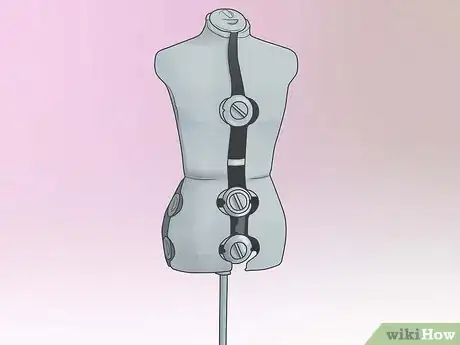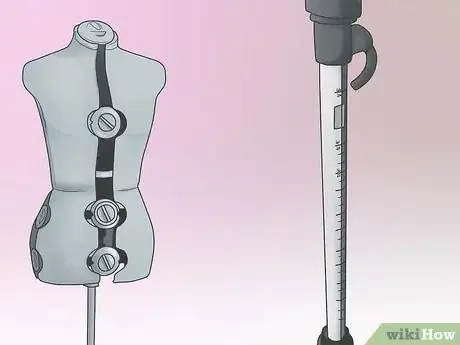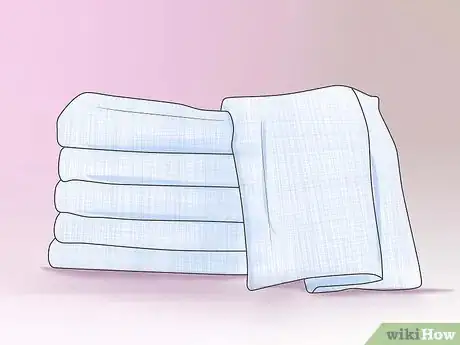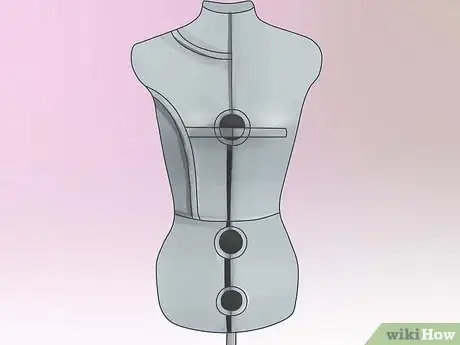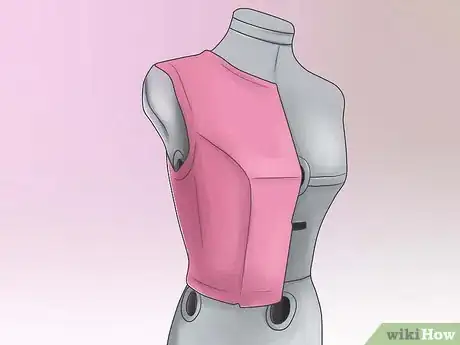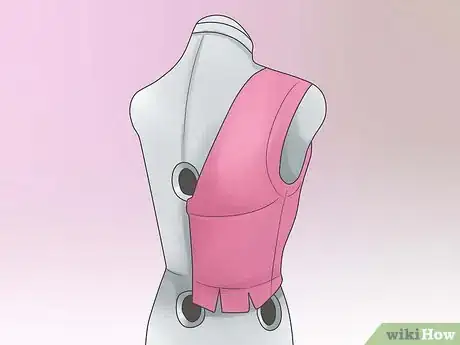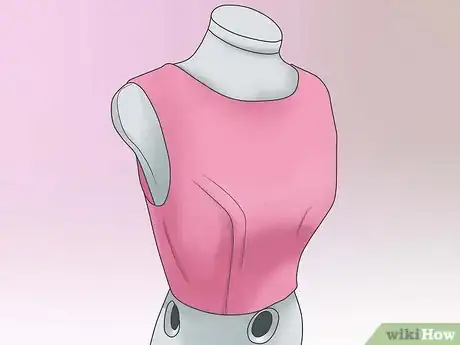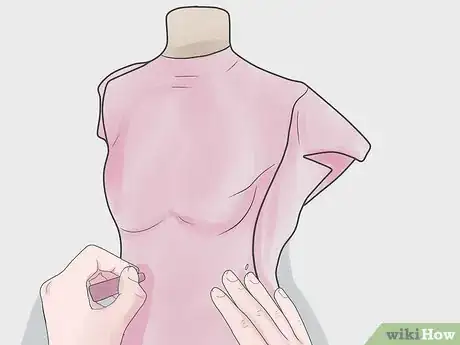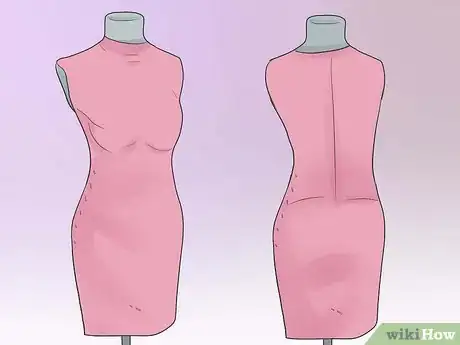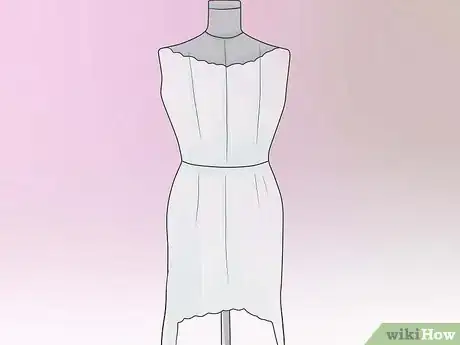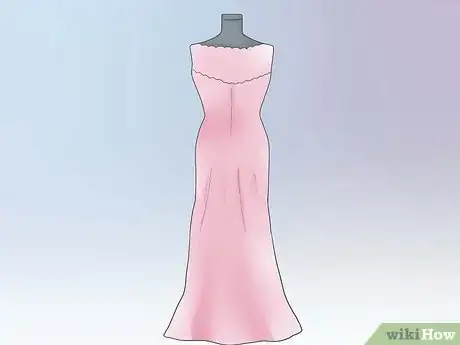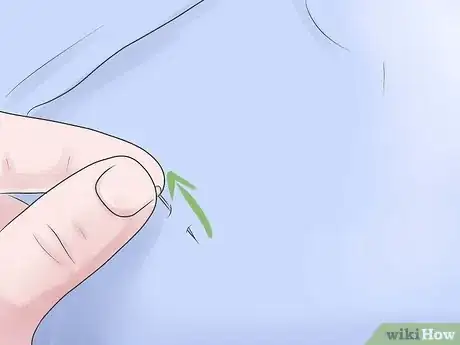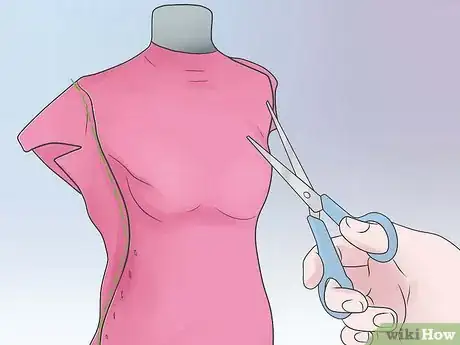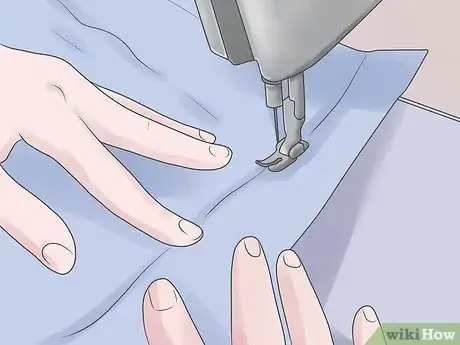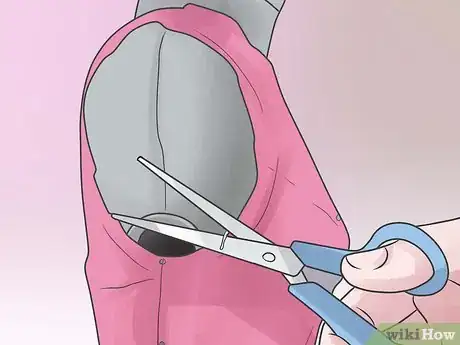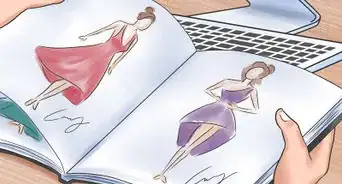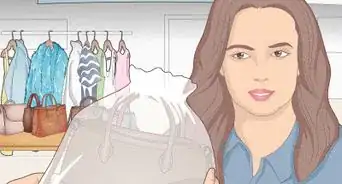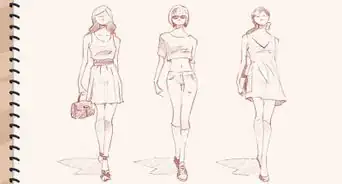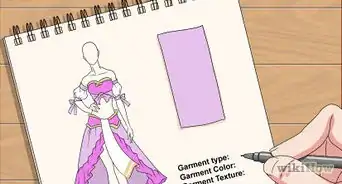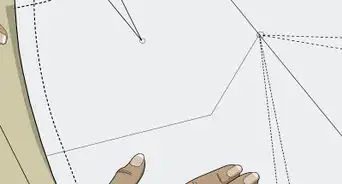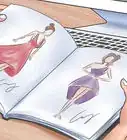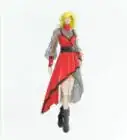This article was co-authored by Alterations Express. Alterations Express is a salon-style alteration and tailoring house with walk-in service, spacious dressing rooms, fitting specialists, and an extraordinary team of tailors and seamstresses at 13 storefront locations. With over 70 years of experience, they specialize in guiding individuals through a professional fitting, evaluating an alteration project on the spot, express alterations, and immediately providing pricing for any alteration. Alterations Express has been featured on multiple websites such as TheKnot.com.
This article has been viewed 70,495 times.
Clothing designers use a process called “draping” to create bespoke dresses from their sketches. They drape a muslin fabric over a dress form and pin it into place. Once the draping is completed, you can transfer the measurements to paper for a pattern or repeat the process with your finished dress fabric.
Steps
Preparing Materials
-
1Purchase a dress form. You will need an adjustable dress form to ensure your dress design is made to the exact size you need. Adjustable dress forms are available for approximately $250 brand new.
-
2Adjust your dress form to the height, waist and torso measurements you are going to use for your prototype dress.Advertisement
-
3Create a sketch of the dress you want to create. Do several detail drawings of the front, back and sides.[1]
-
4Buy muslin to drape. Choose muslin that is close to the weight of the material you want to use in the final dress, so that it behaves in a similar way. This will reduce the cost of materials, because you are creating a prototype in a less expensive fabric.
-
5Mark a centerline down your dress form in the front and back using tape to aid you in creating a symmetrical dress.[2]
Draping the Bodice
-
1Start with a foundation piece if your dress is made out of lightweight fabric. This is usually the liner and it allows the dress to keep its shape on the form. If your dress is a heavyweight fabric to begin with, you can skip this step.
-
2Pin the foundation piece of pieces to your dress form. Often designers will make a generic foundation piece in the measurements of the dress form and then adjust it to fit when it’s on the form.
-
3Ensure you have enough fabric to cover the sections of the dress between hems. You can always cut more off, but you can’t add more on without changing your design.[3]
-
4Drape the fabric across the front bodice. This is usually where you will start because it requires more tailoring.
-
5Choose a place with the most folds and begin pinning the fabric to your dress form.
-
6Mark additional folds with chalk according to your illustration.
-
7Step back and compare the draped fabric to your dress illustration frequently.
Finishing the Draping
-
1Move on to the back bodice when you have finished the front bodice. Pin and compare until you are happy with the draping.
-
2Continue with the front skirt next. Mark lines that should be cut later with chalk.
-
3Complete the draping with the back skirt section.
-
4Baste stitch the sections and folds to the foundation piece. Keep the pins in as long as you can. Removing pins too early and losing folds and tucks is a common mistake with dress draping.
-
5Remove your pins as an entire section is attached with a basting stitch. Remember to hide raw edges from the draping inside the seams.
-
6Cut excess fabric off the form at your chalk lines. Remember to leave seam allowances. If you have very little fabric left, you can fold in under instead of cutting it away.
-
7Remove the dress from the form and sew the seams into your dress with a sewing machine. Alternatively, you can sew it by hand.
-
8Cut away the basting stitches. Use your prototype to construct a dress using the final material. Once designers get used to dress draping, they may choose to start with the final dress material so that they don’t have to drape the dress twice.[4]
Expert Q&A
-
QuestionHow do you drape a dress by yourself?
 Alterations ExpressAlterations Express is a salon-style alteration and tailoring house with walk-in service, spacious dressing rooms, fitting specialists, and an extraordinary team of tailors and seamstresses at 13 storefront locations. With over 70 years of experience, they specialize in guiding individuals through a professional fitting, evaluating an alteration project on the spot, express alterations, and immediately providing pricing for any alteration. Alterations Express has been featured on multiple websites such as TheKnot.com.
Alterations ExpressAlterations Express is a salon-style alteration and tailoring house with walk-in service, spacious dressing rooms, fitting specialists, and an extraordinary team of tailors and seamstresses at 13 storefront locations. With over 70 years of experience, they specialize in guiding individuals through a professional fitting, evaluating an alteration project on the spot, express alterations, and immediately providing pricing for any alteration. Alterations Express has been featured on multiple websites such as TheKnot.com.
Alteration, Tailoring, and Dry Cleaning Specialists Be sure to use lots of pins! Also, keep in mind that draping a dress on a form takes a lot of time, fabric, and patience.
Be sure to use lots of pins! Also, keep in mind that draping a dress on a form takes a lot of time, fabric, and patience. -
QuestionCan designers get other people to sew the clothing?
 Community AnswerYes, some people decide to either sell their designs to others, or hire other people to sew the designs.
Community AnswerYes, some people decide to either sell their designs to others, or hire other people to sew the designs.
Things You'll Need
- Adjustable dress form
- Dress sketch
- Muslin
- Pins
- Tape
- Chalk/Crayon
- Needle
- Thread
- Sewing machine
- Scissors
References
- ↑ Alterations Express. Alteration, Tailoring, and Dry Cleaning Specialists. Expert Interview. 15 September 2021.
- ↑ Alterations Express. Alteration, Tailoring, and Dry Cleaning Specialists. Expert Interview. 15 September 2021.
- ↑ Alterations Express. Alteration, Tailoring, and Dry Cleaning Specialists. Expert Interview. 15 September 2021.
- ↑ http://www.craftsy.com/blog/2013/09/tips-for-draping-on-a-dress-form/
- ↑ https://www.youtube.com/watch?v=Ayd15gpcNT8
